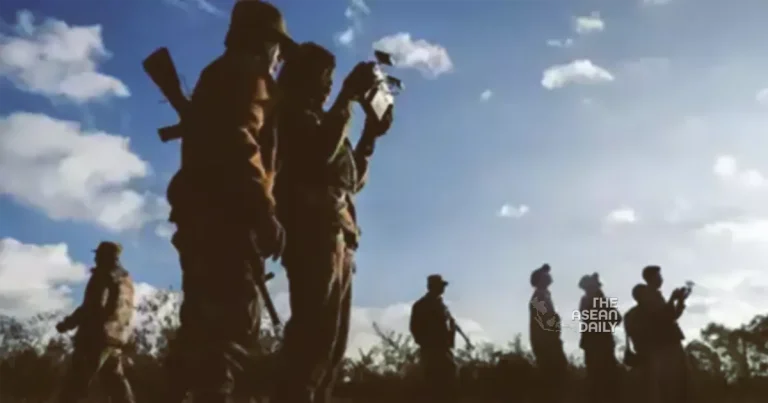21-12-2023 (YANGON) In the heart of Shan State, Myanmar, an 18-year-old recruit is poised to launch a drone strike against junta troops, fuelled by a mix of anger and her mother’s impassioned call for revolution.
Meet Moe Moe, one of the numerous women who defy traditional gender roles by training, living, and fighting alongside their male counterparts in the People’s Defence Forces (PDF), challenging societal norms in this predominantly Buddhist nation.
Her upbringing occurred during a brief era of democracy in Myanmar, only to be abruptly halted by the military coup of 2021. Undeterred, Moe Moe joined one of the many PDF units that emerged, determined to bring an end to the junta’s oppressive rule.
Initially involved in organizing protests against the military, Moe Moe transitioned into active combat after enduring months of the junta’s brutal crackdown.
“I can’t stand the military’s injustice,” she declares after executing a drone strike in Shan State, adjacent to the more densely populated Mandalay region. “They killed innocent civilians. The main reason I joined was because of my anger.”
Cloaked in the group’s camouflage fatigues, adorned with the red peacock badge on her arm, Moe Moe narrates how friends in the Mandalay PDF invited her to join their ranks.
“I was born in Mandalay, I’m a Mandalay girl. So, I joined Mandalay PDF,” she affirms.
Operating under a pseudonym for security reasons, Moe Moe is among approximately 100 women in the Mandalay PDF, engaged in regular confrontations with the junta in both Shan State and Mandalay.
Comprising around one-third of the group’s drone unit, Moe Moe and her female comrades challenge the military’s aerial supremacy by deploying commercial drones retrofitted to carry bombs, targeting junta positions.
“If I drop bombs directly onto a military target, I feel very good for the rest of that day. It motivates me,” she asserts. “I want more drone missions and to better show what I can do.”
Soe Thuya Zaw, a male soldier overseeing drone operations, praises the formidable contribution of his female counterparts.
“We believe in the ability of women. When we were thinking how would be best to use the abilities of female soldiers, we decided that they would be most suited to the drone force,” he states.
Beyond drone operations, women in the Mandalay PDF fulfil various roles, participating in patrols, serving as medics, and contributing to administrative tasks that sustain the group financially and logistically.
Clad in combat trousers and T-shirts, female recruits engage in rigorous physical training, from morning jogs to strenuous routines of squats and sit-ups. They share communal meals of rice and meat in the canteen, emphasizing the unity forged in their struggle.
In the administrative office, amidst laptops and paperwork, women diligently work until an air raid drill prompts them to seek refuge in nearby trenches, highlighting the constant threat they face.
Recent weeks have seen the Mandalay PDF join forces in Shan state, collaborating with three ethnic minority groups in an alliance against the junta. The heightened clashes increase the workload for the PDF’s female medical staff, who tend to the wounded in makeshift health posts.
As the sun sets over the camp, women gather around a campfire, clothes hanging on lines between trees, rifles leaning against a table. Some embark on patrol duty, disappearing into the forest with weapons in hand.
Dressed in full camouflage fatigues, the red lipstick worn by the women matches the badges on their uniforms, a subtle defiance of the grim surroundings. Amidst the darkness, they convene by the fire, illuminated by the glow of their phones, discussing home.
For Moe Moe, home is a persistent thought, especially the loved ones left behind. “Sometimes I miss home,” she reflects. “But every time I talk with my mum on the phone, she tells me, ‘My daughter, we are fine, just come back home after the revolution.’ When I remember her words, I am fine.”




